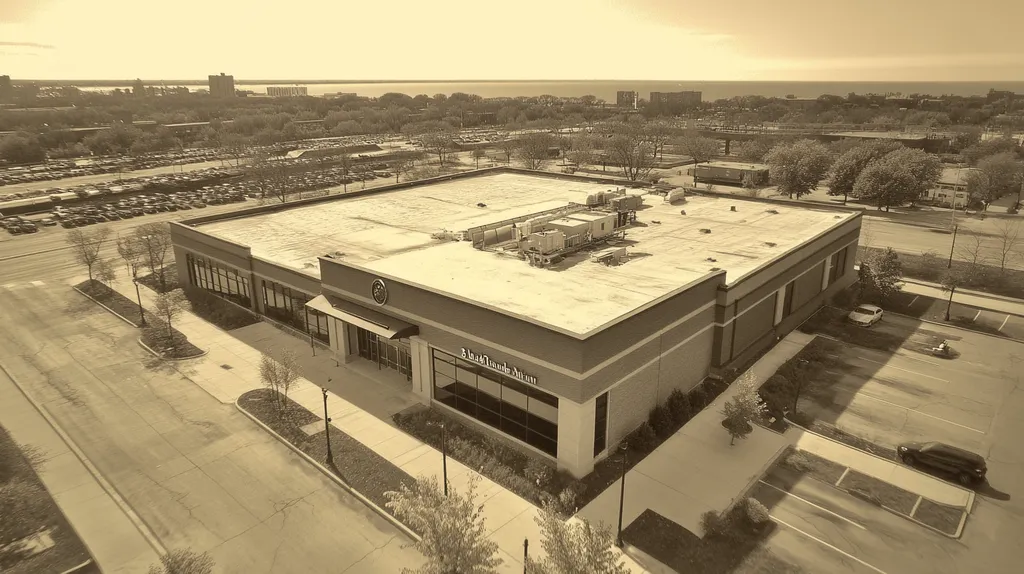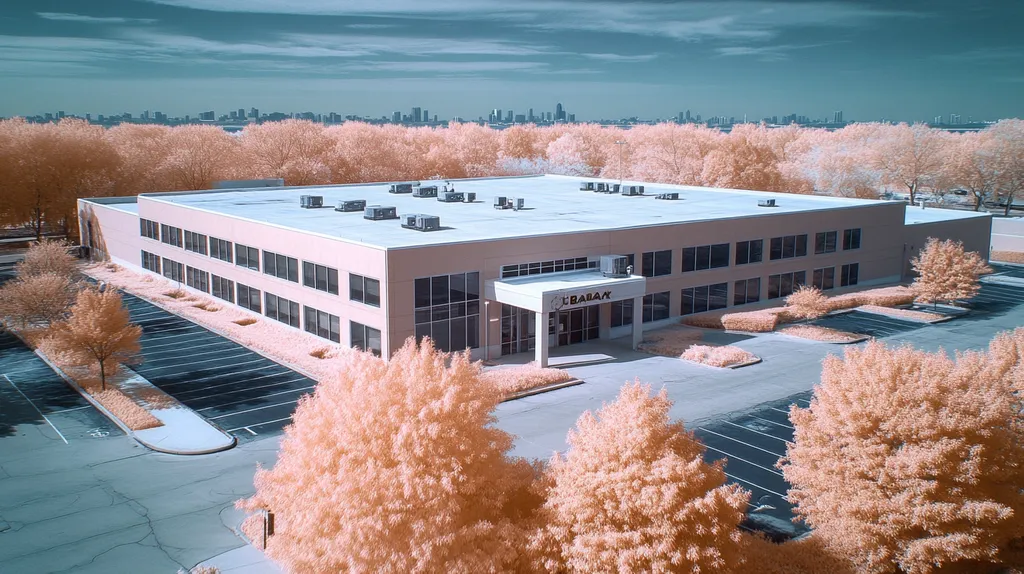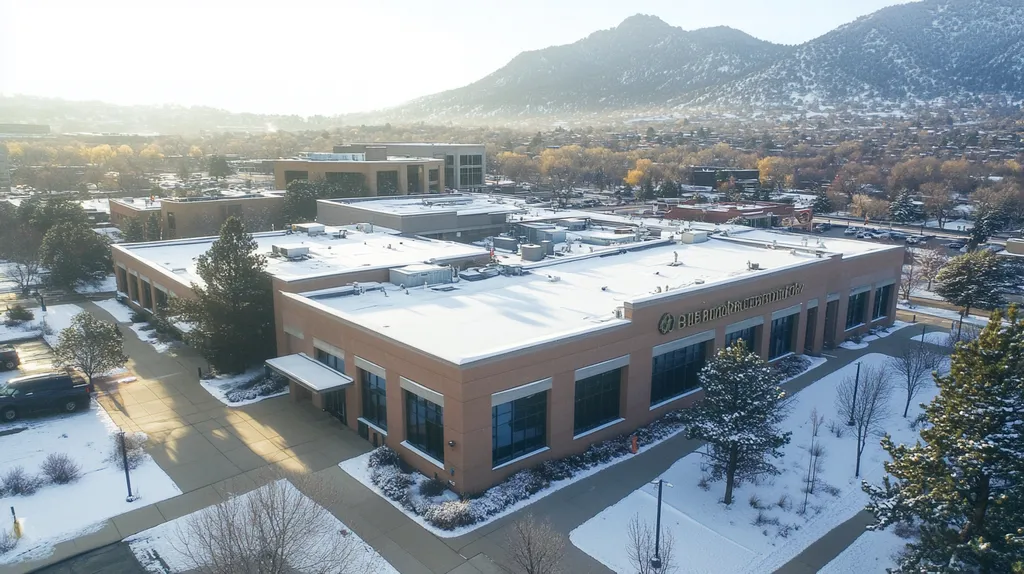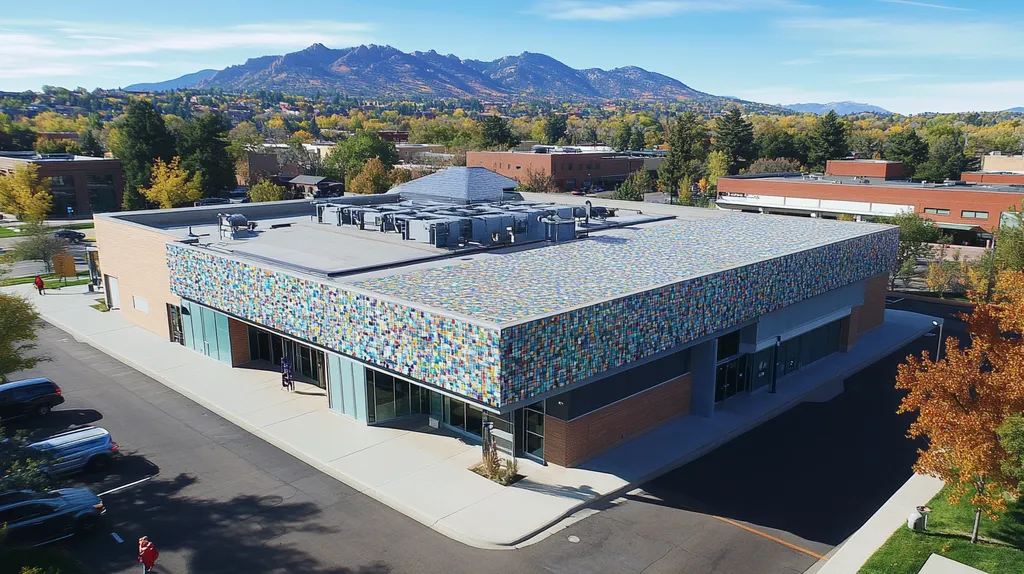Every year, commercial property owners waste millions on premature roof coating failures, with over 40% directly linked to compromised drainage systems. Recent industry data shows that seemingly minor coating mistakes can transform $50,000 maintenance projects into $500,000 emergency replacements.
The interaction between roof coatings and existing drainage systems represents a critical yet frequently misunderstood aspect of commercial roofing performance. Understanding these dynamics helps facility managers protect their buildings while maximizing their coating investment.
This comprehensive guide separates fact from fiction regarding coating applications and drainage systems, providing evidence-based solutions for common challenges faced by commercial property owners and facility managers.
SECTION 1: COMMON MISCONCEPTIONS
When it comes to commercial roofing, misconceptions about coatings and drainage can lead to costly failures. Recent industry data shows that over 40% of premature roof failures stem from drainage-related issues, with coating misapplication being a key contributing factor. Understanding these critical interactions helps facility managers avoid expensive repairs and protect their roofing investments.
Coatings Prevent All Ponding Water Problems
Inadequate drainage leads to water accumulation, causing leaks and potential interior damage. Even with high-quality coatings, ponding water can compromise roof integrity and accelerate material deterioration.
Long-term consequences include mold growth, roofing material deterioration, and even structural instability. These issues often develop gradually, making them particularly dangerous for facility operations. (source: Instacoat)
While coatings provide valuable protection, they cannot compensate for fundamental drainage deficiencies. Proper water management requires both effective coating systems and well-designed drainage solutions.
Facility managers must address underlying drainage issues before applying coatings to ensure maximum roof performance and longevity.
Drainage Systems Function Unaffected by Coatings
Coating applications can significantly impact existing drainage patterns. The additional material thickness often changes surface contours and water flow characteristics across the roof.
Thick or uneven coating applications may create new low spots or redirect water flow away from designed drainage paths. These changes can overload certain areas of the drainage system while leaving others underutilized.
Regular inspection of drains and scuppers becomes even more critical after coating application. Coating buildup around drainage points can restrict water flow and create new ponding areas.
Successful coating projects require careful consideration of existing drainage patterns and potential impacts on water movement.
Roof Coatings Eliminate Need for Roof Slope
The belief that coatings can replace proper roof slope remains a dangerous myth. Even the most advanced coating systems cannot overcome fundamental design flaws in roof pitch.
Water naturally seeks the lowest point, regardless of surface coating. Without adequate slope, water accumulation becomes inevitable, leading to premature coating failure and substrate damage.
Proper slope design must work in conjunction with coating selection. The coating’s thickness and application method should complement existing drainage patterns rather than attempt to correct them.
Facility managers should evaluate roof slope requirements independently of coating decisions. This ensures both systems work together to protect the building effectively.
SECTION 2: PRACTICAL IMPLICATIONS
The relationship between roof coatings and drainage systems represents a critical intersection in commercial roofing performance. Recent data shows that improper coating applications contribute to 35% of drainage-related failures in commercial roofs. Understanding these interactions helps facility managers protect their buildings from water damage and extend roof lifespans while maximizing their coating investment.
How Coatings Influence Drainage Flow Patterns
The basic function of a commercial roof drainage system depends on properly engineered water flow patterns. Even slight changes in surface characteristics can dramatically alter how water moves across the roof.
Coating applications that change surface texture or thickness can disrupt carefully designed drainage paths. These alterations often create new low spots or redirect water flow away from drainage points, leading to unexpected pooling. (source: Waterproof Magazine)
Surface modifications from coatings can also affect the roof’s pitch characteristics. What starts as a minor flow disruption can escalate into significant drainage problems during heavy rainfall events.
Facility managers must evaluate how specific coating products will interact with existing drainage patterns before application. This assessment helps prevent unintended changes to water flow that could compromise roof performance.
Interaction Between Coatings and Drainage Components
Drainage components like scuppers, internal drains, and gutters require careful consideration during coating projects. These elements must maintain proper clearance and flow capacity after coating application.
Coating buildup around drain openings can reduce their effective diameter, restricting water flow. This restriction creates a bottleneck effect that causes water to back up during peak drainage demands.
Edge details and flashing transitions become particularly vulnerable to coating-related issues. Improper application techniques can create dams that prevent water from reaching designated drainage points.
Regular inspection of these critical components helps identify potential problems before they lead to serious drainage failures.
Risks of Neglecting Drainage Maintenance Post-Coating
Post-coating drainage maintenance requires heightened attention to prevent system failures. Coating applications often change how debris accumulates around drainage points and affects water flow patterns.
Regular cleaning becomes even more critical after coating installation. Debris that previously washed away may now collect in new areas, creating unexpected blockages.
Seasonal inspections should focus on identifying any changes in drainage performance. Early detection of coating-related drainage issues allows for corrective action before serious damage occurs.
Establishing a comprehensive maintenance program specifically tailored to coated roof systems helps protect both the coating investment and underlying roof structure.
SECTION 3: COST OF MISINFORMATION
The financial consequences of mismanaging roof coating and drainage interactions can devastate facility budgets. Industry data reveals that drainage-related failures typically cost 3-5 times more to repair than preventive measures would have required. When coating applications compromise drainage systems, what starts as a minor issue can escalate into catastrophic damage requiring complete roof replacement.
Financial Impact of Ignoring Drainage Effects of Coatings
Standing water can deteriorate roofing materials and cause premature system failure, transforming routine maintenance into major capital expenditures. Even small areas of ponding water can compromise coating integrity and accelerate degradation of the underlying substrate. (source: GAF)
The ripple effects extend beyond the roof itself. Water intrusion often damages inventory, equipment, and interior finishes while creating potential liability issues from slip hazards and mold growth.
Insurance carriers are increasingly scrutinizing drainage-related claims, often denying coverage when improper coating applications contribute to failures. This leaves facility owners fully exposed to repair costs that can reach six figures.
Emergency repairs typically cost 300% more than planned maintenance, making proper coating and drainage integration crucial for controlling long-term expenses.
Repair and Liability Costs from Roof Drainage Failures
When drainage systems fail due to coating issues, the resulting damage often triggers costly litigation. Business interruption expenses alone can exceed $10,000 per day while repairs are completed.
Building owners face potential lawsuits from tenants whose operations or property suffer water damage. Legal settlements regularly surpass $100,000, especially when negligent maintenance can be demonstrated.
Environmental compliance violations may occur if drainage failures allow contaminated roof runoff to enter storm systems improperly. These violations often carry substantial fines and mandatory remediation requirements.
The compound effect of emergency repairs, business disruption, and legal exposure can threaten an organization’s financial stability.
Increased Maintenance Expenses Due to Improper Coating Use
Poorly specified coatings that interfere with drainage create recurring maintenance demands. Additional inspections and cleaning become necessary to prevent water accumulation and coating deterioration.
Labor costs escalate as maintenance teams must frequently clear blocked drains and remove standing water. These reactive measures divert resources from preventive maintenance programs.
Coating repairs and reapplication become more frequent when drainage issues persist. Each repair cycle compounds the total cost while potentially introducing new drainage complications.
The cumulative cost of increased maintenance often exceeds what proper initial coating specification would have required, creating an unnecessary drain on facility budgets.
SECTION 4: REALITY CHECK
When evaluating roof coating projects, drainage system performance can make the difference between success and catastrophic failure. Recent industry statistics show that 40% of commercial roofs experience premature coating failures due to inadequate drainage conditions. Understanding the critical relationship between coatings and drainage helps facility managers protect their buildings while maximizing their coating investment.
Roof Coatings Require Adequate Drainage Conditions
Commercial roofing systems demand proper drainage assessment before any coating application. Even minor drainage issues can compromise coating performance and accelerate deterioration of the underlying substrate.
Though many assume flat roofs are level, they require specific pitch design to facilitate water movement. Every roof surface must incorporate calculated slopes directing water toward designated drainage points. (source: Waterproof Magazine)
Pre-coating inspections must verify drain locations, sizes, and flow patterns. These assessments help identify potential problems that could affect coating performance.
Addressing drainage deficiencies before coating application prevents trapped moisture and ensures proper curing conditions for maximum coating durability.
Effects of Ponding Water on Roof Membrane and Drainage
Standing water creates destructive conditions that accelerate coating breakdown and membrane deterioration. Areas with ponding water experience up to five times faster degradation than properly draining surfaces.
Water accumulation adds significant weight stress to roof structures. This additional load can compromise structural integrity and create unsafe conditions.
Chemical interactions between standing water and coating materials often void manufacturer warranties. These reactions can break down protective properties and expose underlying materials to moisture damage.
Regular monitoring helps identify ponding areas before they cause irreversible damage. Early intervention prevents minor drainage issues from escalating into major structural problems.
Importance of Positive Drainage and Timely Water Removal
Positive drainage systems actively move water off the roof surface within 24-48 hours after rainfall. This rapid removal prevents moisture accumulation and extends coating service life.
Backup drainage components provide critical redundancy during heavy rainfall. Secondary drains and overflow scuppers protect against primary system failures.
Regular maintenance schedules must include drain cleaning and flow testing. These routine checks ensure drainage systems maintain optimal performance throughout the year.
Professional drainage assessments help facility managers develop effective water management strategies. These evaluations guide maintenance priorities and coating selection decisions.
SECTION 5: EVIDENCE-BASED ALTERNATIVES
Commercial roofing failures due to drainage issues cost facility owners millions annually. Recent industry data shows that 65% of premature coating failures stem from inadequate drainage considerations. Understanding and implementing evidence-based solutions can prevent these costly mistakes while extending roof life by 15-20 years. This section explores proven strategies for coating selection, slope management, and drainage system integration that protect both the roof and the facility’s bottom line.
Selecting Coatings Compatible with Commercial Drainage Systems
Coating selection must prioritize compatibility with existing drainage patterns and roofing materials. High-performance coatings designed for specific substrates deliver up to three times longer service life compared to generic alternatives.
Material viscosity and application thickness directly impact drainage effectiveness. Coatings that maintain consistent thickness without pooling or sagging help preserve designed water flow patterns.
Climate-specific formulations protect against regional weather challenges while maintaining drainage integrity. UV-resistant coatings prevent premature degradation in sun-exposed areas, while hydrophobic formulations excel in high-rainfall regions.
Testing coating samples on small roof sections before full application helps verify drainage compatibility. This approach identifies potential issues before they affect the entire roofing system.
Implementing Proper Roof Slope and Drain Placement
Though many assume flat roofs are level surfaces, they require carefully engineered slopes to direct water movement. Positive drainage designs ensure water flows toward designated collection points within 48 hours after rainfall. (source: Waterproof Magazine)
Strategic drain placement at natural low points maximizes drainage efficiency. Primary drains handle routine rainfall, while overflow systems provide critical backup during severe weather events.
Regular slope analysis using advanced imaging technology identifies areas where water movement may be compromised. This data guides targeted improvements before coating application.
Modifying existing slopes through tapered insulation or cricket installation creates positive drainage without major structural changes. These adjustments protect coating investments by preventing water accumulation.
Integrating Drainage Improvements Before Coating Application
Comprehensive drainage assessment before coating application prevents future failures. Identifying and correcting deficiencies early reduces repair costs by up to 80% compared to emergency interventions.
Modern drain monitoring systems provide real-time performance data. These technologies alert maintenance teams to potential issues before water damage occurs.
Installing additional drainage capacity where needed ensures reliable performance during peak rainfall. Secondary drains and enhanced scupper systems provide essential redundancy.
Documentation of drainage improvements creates valuable maintenance records. These records guide future coating projects and help maintain warranty compliance throughout the roof’s service life.
SECTION 6: TEST AND VERIFY
Rigorous testing and verification of drainage systems represent the critical difference between coating success and catastrophic failure. Industry data shows that 45% of coating failures stem from inadequate pre-installation drainage assessment and post-installation monitoring. For facility managers, implementing systematic testing protocols protects their coating investment while preventing the cascading effects of drainage failure that can compromise entire roofing systems.
Methods to Assess Drainage Performance Before Coating
Inadequate drainage leads to water accumulation, causing leaks and potential interior damage. Long-term consequences include mold growth, roofing material deterioration, and even structural instability. (source: Instacoat)
Pre-coating assessment must include comprehensive flow testing using calibrated water volumes. This testing reveals existing drainage patterns and identifies potential problem areas before coating application begins.
Digital mapping technology creates detailed drainage profiles showing water movement across the entire roof surface. These profiles guide coating application strategies and highlight areas requiring additional attention.
Core samples and moisture surveys determine substrate conditions that could affect coating adhesion. This data helps prevent coating failures caused by trapped moisture or compromised materials.
Inspecting Roof Surface and Drain Condition Post-Coating
Post-coating inspections must verify that drainage pathways remain unobstructed and functional. Special attention focuses on drain openings, scuppers, and critical transition points where coating thickness can affect water flow.
Systematic testing using controlled water application reveals any changes in drainage patterns. This process identifies areas where coating application may have created new low spots or flow restrictions.
Thermal imaging during drying periods highlights areas of retained moisture. These wet spots often indicate drainage problems that require immediate attention.
Documentation of post-coating drainage performance establishes baseline conditions for ongoing maintenance. This reference point helps track system changes over time.
Monitoring and Maintaining Drainage to Prevent Ponding
Regular monitoring schedules must include specific checks for coating-related drainage issues. Monthly inspections should focus on areas prone to debris accumulation or showing signs of coating stress.
Advanced monitoring systems using moisture sensors provide real-time alerts about drainage problems. This technology enables rapid response before minor issues escalate into major failures.
Seasonal maintenance requirements vary based on local climate conditions and debris patterns. Customized schedules ensure appropriate timing for critical cleaning and inspection tasks.
Professional assessment of drainage performance helps identify developing problems before coating damage occurs. Early intervention prevents minor drainage issues from compromising the entire roofing system.
The Bottom Line
With over $2 billion lost annually to premature roof failures, the relationship between coatings and drainage systems demands immediate attention from facility managers.
Proper integration of coating applications with existing drainage systems can extend roof life by 15-20 years, while mistakes often trigger catastrophic failures within months.
The evidence is clear: successful coating projects require thorough drainage assessment, appropriate material selection, and ongoing monitoring protocols.
Facility managers who implement comprehensive drainage strategies before coating application typically reduce repair costs by 80% compared to reactive approaches.
The future of commercial roofing depends on recognizing that coatings and drainage systems must work in harmony to deliver reliable, long-term performance.
FREQUENTLY ASKED QUESTIONS
Q. Do coatings prevent all ponding water problems on a commercial roof?
A. No, coatings alone cannot eliminate ponding water issues. Inadequate drainage systems will still lead to water accumulation, potentially causing leaks and damage. It’s essential to address both coating quality and drainage design for optimal roof protection.
Q. How do coatings influence drainage flow patterns on an industrial roof?
A. Coating applications can disrupt engineered water flow paths by altering surface texture. This may create new low spots or redirect water, leading to pooling if not properly evaluated. Understanding these interactions is vital for smart facility management.
Q. What is the financial impact of ignoring drainage effects of coatings?
A. Ignoring drainage can lead to significant repair costs and business interruptions. What begins as minor ponding can escalate, necessitating expensive emergency repairs and potential liability claims. Proper attention to drainage is crucial for long-term financial health.
Q. Why do roof coatings require adequate drainage conditions?
A. Adequate drainage conditions are essential to prevent moisture accumulation, which could compromise the coating’s effectiveness. Water movement must be directed properly to extend the coating’s lifespan and avoid unnecessary deterioration of the underlying materials.
Q. How can I select coatings compatible with my commercial drainage system?
A. Choose high-performance coatings specifically designed for your roofing materials and drainage configurations. Testing samples on a small area first can help identify compatibility and potential drainage challenges. Compatibility is vital to ensure long-lasting coating performance.
Q. What methods are effective in assessing drainage performance before coating?
A. Conduct thorough flow tests with calibrated water volumes to observe drainage patterns. Digital mapping can also highlight areas needing attention. These assessments are crucial for preventing coating failures and maintaining roof integrity.
Q. How often should I monitor drainage systems after coating application?
A. Regular monitoring should be conducted monthly, focusing on areas likely to accumulate debris or exhibit signs of drainage issues. This proactive approach ensures early detection of potential problems, safeguarding your roofing investment.










